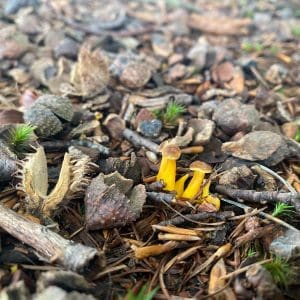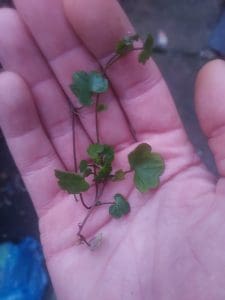Traditionally November marked the end of the harvest season and the beginning of winter, but there’s still space to head out foraging in November. It’s really the foragers last chance to collect and preserve ingredients to last throughout the winter. In some parts of the country snow will already have fallen and it’s dark by 4pm but there’s still plenty of edibles to find.
So what can you forage in November? Here are our top five picks for the month.
What to look for when foraging in November
You can click on the species below to be taken to our full identification guides;
Ivy-leaved toadflax
A lovely, common and easy to ID plant, you’ll find it clinging to walls and rocky outcrops. All parts of the plant are edible and if the weather is mild don’t be surprised to find it in flower, which add a mild mustard flavour to dishes.
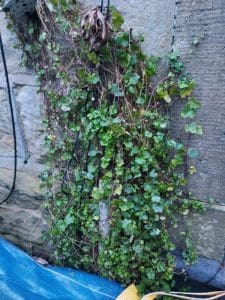
Wood Sorrel
When I show this plant to people on walks it tends to be one of everyone’s favourites, the small leaves pack some serious flavour. Spring and summer is when the plant puts most of its growth but it can be found nearly all year round. It’s quite delicate so I rarely cook with it, instead add it to salads, desserts or it makes a lovely gin ingredient.
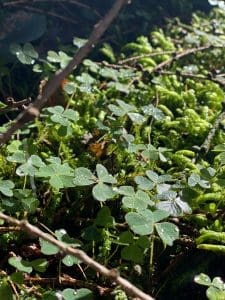
Amethyst deceiver
A beautiful mushroom that can be found in huge quantities, they can be used fresh, dried or are particularly good pickled. Look for them near deciduous trees, they can be quite small and tough to spot at first but once you get your eye in you’ll hopefully find many more.
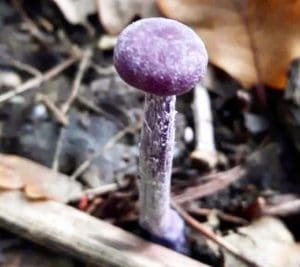
Cowberry
Very similar to cranberries and they can be used in the same way. In Scandinavia they are called lingonberries and are stewed and served as an accompaniment to roast meats and meatballs. Look for them on mountain sides and more, quite often I find them growing alongside Bilberry. The berries can be eaten raw or cooked but avoid the leaves as they are mildly toxic.
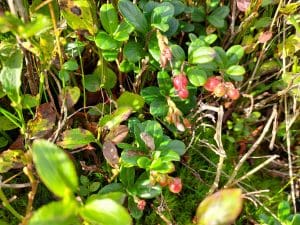
Winter chanterelle
These little mushrooms can sometimes be found in huge numbers in November. They are mycorrhizal with broadleaf and conifer trees and I normally find them where the ground is damp and mossy. They can be used in a variety of recipes and have a deep earthy flavour.
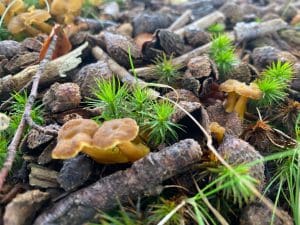
Recipe of the month when Foraging in November
Cowberry jam
A simple recipe that works perfectly with your Christmas turkey or any roasted meat. It only takes around 10 minutes to make and kept in a jar in the fridge will last a couple of months at least, definitely long enough for Christmas day and all the turkey sandwiches in the weeks after!
Ingredients:
- 100g Cowberries
- 1 small red onion (diced)
- 30ml apple cider vinegar
- 10g brown sugar
- salt and pepper
Method:
- In a pan fry off the red onion for 5 minutes until soft, then add the brown sugar and cook for a further 5 minutes until the onion starts to caramelise
- Pop in the rest of the ingredients and let it simmer for a further 5 minutes (if you’d like the consistency a little more runny add a little water)
- All done… that was quick – pop in a jar an enjoy with you next roast



